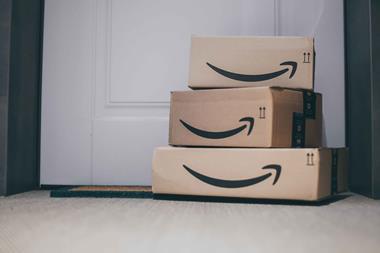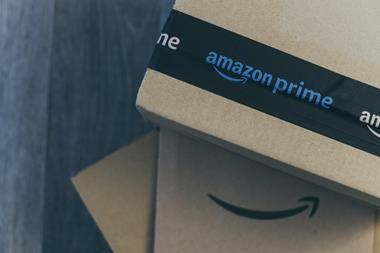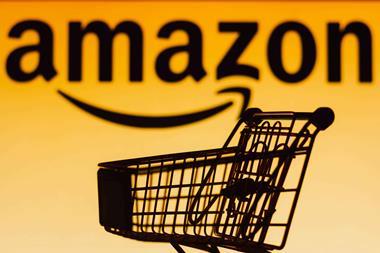Amazon chief executive Andy Jassy emphasised to analysts on its quarterly investor call the huge opportunity that generative AI (Gen-AI) will bring to its business: “I don’t know if any of us have seen a possibility like this in technology in a really long time, for sure, since the cloud, perhaps since the internet.”
And it is great timing, as retail sales growth remains in single digits and fulfilment costs increase.
Being a huge, diversified behemoth is paying off for Amazon, which reported its first-quarter results this week for the period to March 31.
The 12.5% increase in total sales to $143.3bn (£114.8bn) was evident across the business with growing product sales, physical store sales and a 7% rise in online sales. Service revenue jumped 17.1%, which includes Prime membership and fees from marketplace sellers.
Net income jumped 228.8% to $10.4bn (£8.3bn) in the quarter, demonstrating the continued positive impact from cost-cutting efforts.
But although it continues to grow ahead of competitors, Amazon’s retail business is not without its challenges. Chief financial officer Brian Olsavsky told analysts that consumers continued to trade down to save money during the quarter, particularly in international markets in Europe that are proving slower to recover than in the US.
Customers ordering more consumables, which require rapid delivery but with lower margins, led to an increase in the cost of sales and fulfilment even as other costs including technology and administration were reined in.
Even with increased automation and the regional restructuring of its US fulfilment centres, the need to deliver to Prime members “at the fastest speeds ever” weighs on Amazon.
Gen-AI demand ‘biggest opportunity since the internet‚
There is a big opportunity on the horizon, however. The answer to Amazon’s challenges is its AWS cloud computing division – more specifically, the growing demand for Gen-AI solutions, which are turbo-charging the business.
AWS revenue growth accelerated to 17% in Q1 to reach $25bn (£19.8bn), up from 13% growth for AWS in 2023.
Jassy outlined three trends that the company was seeing from customers. First, companies “have largely completed the lion’s share of their cost optimisation and turned their attention to new initiatives”.
Second, businesses are modernising their infrastructure and moving to the cloud, a trend that began before the pandemic but was temporarily put on hold by many owing to rising inflation and the need to cut costs.
Third, Jassy said AWS customers are excited about leveraging Gen-AI to change the customer experience and business operations and AWS has seen “considerable momentum” on the AI front where it has already accumulated a “multibillion-dollar revenue run rate”.
Among the businesses that Amazon called out as AWS partners were Siemens, Accenture, BT and Audi.
Summarising the huge opportunity that generative AI represents to Amazon, Jassy concluded: “I don’t know if any of us have seen a possibility like this in technology in a really long time, for sure, since the cloud, perhaps since the internet.”
AI in Amazon’s retail business
The benefits of its AWS technology expertise continue to add value to Amazon’s retail business, with a growing number of AI solutions being developed and deployed.
They include the rollout of Rufus, the new generative AI-powered shopping assistant, helping customers save time and make more informed purchase decisions by answering questions, providing product comparisons, making recommendations and more.

Sellers are also benefiting from new Gen-AI features to assist with the creation of high-quality and engaging product listings. A win-win for Amazon and its sellers, with 100,000 using the tools to date.
Amazon is also benefiting internally from the Gen-AI assistant Amazon Q AI, an AWS product allowing businesses to search all enterprise data repositories to summarise logically, analyse trends and engage in dialogue with customers about this data.
In April, Amazon showcased a range of innovations in robotics and AI-powered technology in its warehouses, including a robotic labeller, a universal item sorter and a fleet of robots that navigate the floor using QR codes to bring items to employees at workstations.
Even more advertising revenue
In an unpopular move with its Prime subscribers, Amazon took the decision earlier this year to introduce ads to its Prime Video streaming platform. That revenue together with an increase in sponsored product listings drove a 24% jump in advertising revenue to $11.8bn (£9.5bn) in the quarter.
The impact on Prime members, the customers that Amazon claims to put “at the heart” of its business, may be questionable but Jassy sees the effect to date as positive.
He told analysts: “I think advertisers are excited about being able to expand their ability to advertise with us in video beyond Twitch and Freevee to Prime video shows, movies; I think they also find that the relevancy and the measurability of that type of advertising and Prime Video ads is unique for them. It’s off to a very good start. It’s early days but we’re optimistic there.”
Investing to ride the technology wave
Overall, Jassy’s approach appears to be cautious compared to his predecessor and very much focused on profitability. Last year’s job cuts and the decision last month to halt the rollout of Just Walk Out technology to large grocery stores in favour of more practical Dash carts illustrate the new, more circumspect direction the company is taking.
But when it comes to Gen-AI, Amazon is determined to capitalise on the opportunity. Over the next three quarters, the company expects to increase capital expenditure to invest in opening new data centres in support of AWS.
Rising Gen-AI has come at a very opportune time for Amazon and it will also help drive its retail business.


























No comments yet